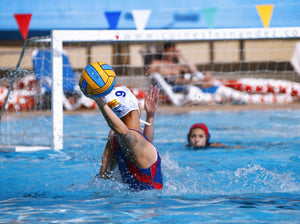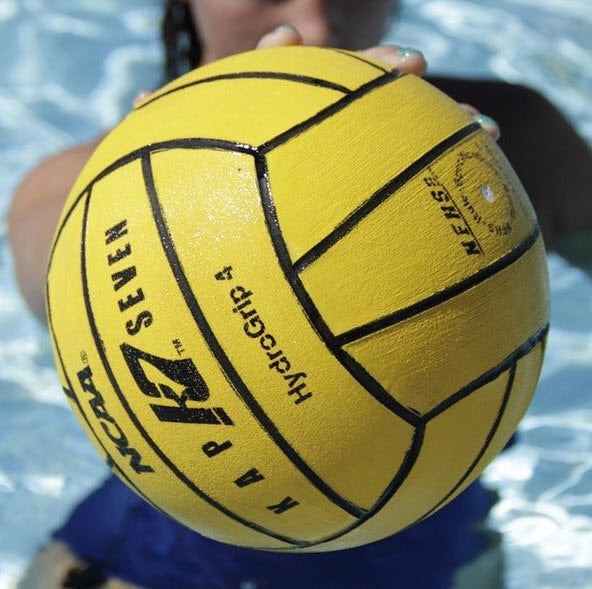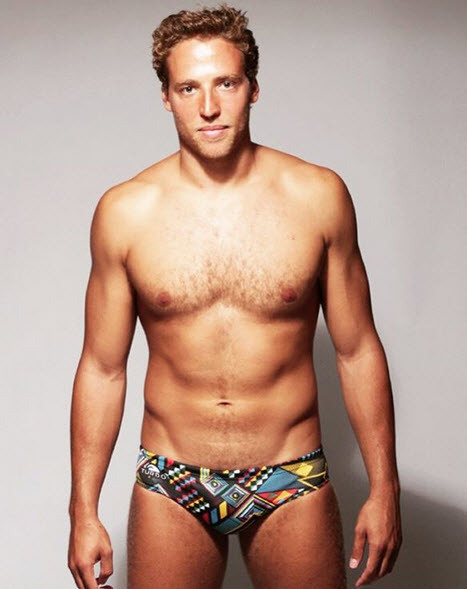Water Polo Goalkeepers: How to Block a Goal
 Water polo goalkeepers have one main objective during games: Blocking shots on goal. Keeping the ball from entering the cage is an intimidating responsibility, but also the one of the most valuable skills in the water. One crucial difference between field players and goalkeepers is that a goalkeeper may touch the ball with two hands. This makes blocking balls much easier, but also means that they must master a very different set of skills than field players. This guide includes the basic techniques goalkeepers should use when blocking shots.
Water polo goalkeepers have one main objective during games: Blocking shots on goal. Keeping the ball from entering the cage is an intimidating responsibility, but also the one of the most valuable skills in the water. One crucial difference between field players and goalkeepers is that a goalkeeper may touch the ball with two hands. This makes blocking balls much easier, but also means that they must master a very different set of skills than field players. This guide includes the basic techniques goalkeepers should use when blocking shots.
How to Block the Ball
Blocking a shot on goal seems as simple as knocking an oncoming shot away from the cage. While that is the basic objective, there are many strategies and tips that improve a goalkeeper’s effectiveness at this task. Each type of shot requires a slightly different strategy, but there are a few guidelines that hold true for all shots. Read on for what goalkeepers need to keep in mind when blocking any shot on goal.

Correct Body Position
Goalkeepers need to be in a ready position when their team is on defense. That means eggbeatering slightly harder to keep their chest out of the water, and with their hands at or near the surface of the water. This gets them ready to pop up immediately for a block, while also providing a better view of what is happening in the field.
Light Hands
Goalkeepers need to keep both hands at or above the surface of the water any time they are expecting a shot. This means that goalkeepers rely more on treading with their legs than sculling with their hands to explode out of the water. While in the ready position described above, light sculling is fine, but the keeper’s hands and arms should be ready to shoot out of the water at a moment’s notice. It is more important for the goalkeeper’s hands to get out of the water than it is their chest or torso. A rule of thumb is that the closer the ball is to the cage, the higher the goalkeeper’s hands should be.
Shooting Angles
The angle of the shot dictates where the goalkeeper will position him or herself in the goal. If the shooter is positioned far to one side of the cage, the goalie can maximize their coverage of the goal by shifting to that side. The closer the shooter is to the goal, the more the goalkeeper should move out towards them. This cuts down on the shooter’s angle and makes it harder for the shooter to get the ball around the goalkeeper.
Imagine a long length of rope where each end is tied to a goal post. Imagine that the middle of the rope reaches to the shooter, forming a triangle. The goalkeeper should move within the confines of this triangle to block the greatest possible area of the cage. Many teams even do this in the water with a real rope to better understand shooting angles.
What to Block With
When the ball is fired at the goal, goalkeepers should primarily use their arms and upper chest to block the ball. Since arms are more mobile, easier to raise, and faster, they should be the main barrier between balls shot to the side or corners of the goal. Shots to the lower middle of the goal can be blocked with the chest and caught quickly.
Controlling the Ball After the Block
If possible, goalkeepers should stay in control of the ball after the shot. Obviously, it is better to deflect the ball out of reach than to allow a goal, but goalkeepers should never give up control of the ball without a fight.
Angling their body downward and blocking the ball toward the water — rather than up over the goal or sideways — is a good way to keep it within grabbing distance. If the ball bounces off to the side of the goal, the goalkeeper also has the option to quickly swim the ball out to the side and away from the opposing team. Good goalkeepers absorb the ball into their body rather than acting as a backboard, since rebounding it will only release the ball back into the hands of the opposing team.
Never Give Up
As a goalkeeper, try not to see every scored shot as a failure. Rather, use each one as learning opportunity and resolve not to make the same mistake next time. It’s not a goal until the ball is in the net, so fight for possession, and don’t stop until the whistle blows. It is impossible to block every single ball, but practicing the above skills and keeping the right mindset will put any goalkeeper on the road to success.



